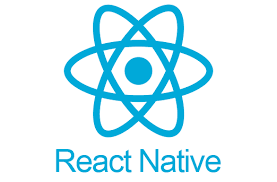You can have the same question if you’re new to the field of web and mobile development.
It’s simple for a novice to believe that Reactjs vs React Native are interchangeable. After all, “React” is a part of their names.
Despite having many things in common, React.js and React Native are different from one another. In this essay, I will first outline React.js and React Native’s introduction and differences. By the time you finish reading this article, you’ll be well-versed in both tools and the kind of apps they’re used to create.
Table of Contents
ToggleIntroduction
Since the beginning of web development, JavaScript has played a significant role. React and React Native, two of the top JavaScript frameworks, have swept the world by storm, inspiring a wide range of trends, jobs, and stunning websites! You need to be aware of the variations between ReactJS and React Native.
What is ReactJS?
A JavaScript-based UI development library is called React. It is controlled by Facebook and an open-source developer community. Despite not being a language, React is a widely used library in the web development industry. The library made its debut in May 2013 and is currently among the most widely used front-end libraries for web development.
Beyond just UI, React offers a number of extensions for supporting the architectural design of entire applications, including Flux and React Native.

What is React Native?
React Native is a framework that is used for creating mobile applications. It is based on ReactJS and uses the same syntax and workflow.
Numerous companies, including Uber, Microsoft, and Facebook, have successfully adapted it and use it across a wide range of industries.
But before you fully commit to React Native, it’s crucial that you understand how it works and decide if it’s the best option for your project.
However, instead of rendering to HTML, React Native components are rendered to native code, which makes them more efficient and better suited for mobile devices.

ReactJS vs React Native
While ReactJS and React Native have some similarities, they also differ significantly enough to be used for various tasks. While React Native is used for mobile development, ReactJS primarily creates web applications. React Native uses native components, which makes it more effective for mobile devices, while ReactJS makes use of the Virtual DOM, which enables faster updates and easier management of large applications.
| Comparison Factor | ReactJS | React Native |
|---|---|---|
| Definition | A JavaScript library for building user interfaces on the web. | A framework for building native mobile apps using JavaScript and React. |
| Platform | Web (Browser-based) | iOS, Android, and more |
| Installation Process | installed through the npm package manager. | Requires both Node.js and the React Native CLI to be installed. |
| User Interface | Uses HTML and CSS to create user interfaces. | Uses native components for creating user interfaces. |
| Syntax | React JS library for UI using HTML-like JSX syntax. | The syntax for React Native is similar to React but with a focus on mobile app development. |
| Feasibility | The more feasible choice for developing web applications is ReactJS. | The most feasible choice for developing mobile apps is React Native. |
| Code Sharing | Code can be shared between web applications and mobile apps, but the UI must be re-implemented for each platform. | Code can be shared between mobile apps for different platforms (iOS, Android, etc.). |
| Navigation | ReactJS employs a standard browser-based method. | React Native is a more effective option than ReactJS for building native mobile applications. Native platform navigational components are used by React Native. |
| Performance | Slower than native apps, but still very fast and efficient for web applications. | Can achieve native-like performance since it’s built using native components. |
| Storage | Projects requiring high-performance storage, such as dynamic web applications, are an excellent fit for ReactJS. | For projects that must be scalable, React Native is a superior option. |
| Development | Easier to learn and use for web developers. | Requires knowledge of both React and native app development. |
| Third-Party Libraries | Wide range of third-party libraries available. | A more limited selection of third-party libraries is available. |
| Debugging | Easy to debug using web browser’s developer tools. | Debugging can be more challenging since it requires accessing the device’s console. |
| Learning Curve | React.js is the most popular JavaScript library for developing fast user interfaces, making it simple to learn. | Learning React Native is advantageous for both because it contains all the React components. |
ReactJS vs React Native: Installation Process
Any web platform can use the JavaScript library known as ReactJS. It has a sizable user and developer community and is simple to set up and use.
To create mobile apps using ReactJS, however, you must utilize a third-party toolkit like React Native or Cordova because ReactJS does not natively support mobile devices.
React Native, on the other hand, is a mobile-specific framework that enables the development of cross-platform apps. Setting it up is more challenging than with ReactJS. The performance is still better, and the user experience is more constant across platforms.
Read also:- Minecraft Java Edition: The Ultimate Survival Guide And Minecraft Biomes For Beginners [2023]
Key benefits of ReactJS
ReactJS has several features that make it a popular choice for web development.
Virtual Document Object Model (VDOM)
The Virtual DOM is a feature of ReactJS that allows for faster updates and better performance. It works by creating a virtual representation of the DOM, which can be updated without affecting the actual DOM. This makes it easier to manage large applications and provides a better user experience.
When compared to other front-end technologies, which need to update each object even if just one in the web application changes, this speeds up processes.
Component-Based
ReactJS follows a component-based architecture, meaning applications are built using smaller, reusable components. This makes it easier to manage and update applications, as changes can be made to individual components without affecting the rest of the application.
Server-Side Rendering
ReactJS allows for server-side rendering, which means that pages can be rendered on the server before being sent to the client. This improves the initial loading time of the application and provides better SEO performance.
Extensions
Several extensions for application architecture are supported in React. In the building of web applications, Redux, Flux, and server-side rendering are all widely supported. Popular cross-platform mobile app development framework React Native was created from React.
Read also:- The Benefits Of React In Web Development
Key benefits of React Native
React Native has several features that make it a popular choice for mobile development.
It saves time
Coding, deploying, and fine-tuning a cross-platform product are all made much faster with React Native. Without having to manage separate codebases and manage separate development teams, you can create native apps for iOS and Android.
By doing this, you can make much better use of your time and resources.
Cross-Platform
React Native allows developers to build applications that can run on both iOS and Android devices. This saves time and resources, as developers don’t have to build separate applications for each platform.
Accessibility
More accessibility is included in the React Native build. The Accessibility API announcement has advanced from the prior one. Roles, action support, flags, and a lot more things have changed. Other improvements include CALayer for drawing text, “reduction motion” support, improved Android keyboard accessibility options, and more.
Hot Reloading
React Native supports hot reloading, which means that developers can see the changes they make to the application in real time. This saves time and enhances the development process.
Use Cases for ReactJS
ReactJS is suitable for a variety of web development use cases.
- Large Applications: ReactJS is well-suited for developing large applications, as its component-based architecture allows for easier management and updates.
- Real-Time Updates: ReactJS is suitable for applications that require real-time updates, as the Virtual DOM allows for faster updates.
- Data-Heavy Applications: ReactJS is suitable for applications that handle large amounts of data, as the Virtual DOM provides better performance and a better user experience.
- Smooth Learning Curve: React is a simple, lightweight library that solely functions with the view layer of a web page. Compared to its JavaScript sibling, Angular, it has a simpler learning curve, making it simpler to get started.
- Reusable Components: You start with simple elements like buttons, checkboxes, and dropdown menus and create wrapper elements out of those foundational elements. Then you create higher-level wrapper components. This process keeps on till your program is the sole remaining root component.
Use Cases for React Native
React Native is suitable for a variety of mobile development use cases.
- Mobile Apps – React Native is well-suited for developing mobile applications, as it provides native functionality and better performance.
- Performance and Speed – React Native is suitable for applications that require high performance and speed, as it uses native components.
- Native Functionality – React Native is suitable for applications that require access to native functionality, such as the camera or accelerometer.
- Cross-Platform Development – React Native allows for cross-platform development, meaning that developers can use a single codebase to develop applications for both iOS and Android platforms, reducing development time and cost.
- Third-Party Library Support – React Native has a large and active community that develops third-party libraries, making it easier for developers to add functionality to their applications.
- Hot Reloading – React Native has a feature called hot reloading that allows developers to see changes to their code in real-time, which can significantly speed up the development process.
- Easy to Learn – React Native uses JavaScript, which is a widely-used programming language, making it accessible to developers with various levels of experience.
- Scalability – React Native is suitable for developing scalable applications, as it can handle large amounts of data and complex logic.
- Cost-Effective – React Native is a cost-effective option for mobile development, as it allows for faster development time and fewer resources required to develop for multiple platforms.
- Support from Facebook – React Native is developed and maintained by Facebook, which provides developers with the assurance of continued support and development in the future.
Read also:- Java Vs C++: Understanding The Fundamental Differences
Pros and Cons of ReactJS
Pros
- Faster updates with the Virtual DOM
- Easier management with the component-based architecture
- Server-side rendering for better SEO performance
Cons
- Steep learning curve
- Limited built-in functionality
- Requires knowledge of JavaScript and JSX
Pros and Cons of React Native
Pros
- Native functionality for better performance and user experience
- Cross-platform development for iOS and Android devices
- Hot reloading for faster development
Cons
- Limited access to native APIs
- Can be difficult to integrate with existing code
- Larger file sizes than native applications
Conclusion
ReactJS and React Native are both popular frameworks for web and mobile development, respectively. While they share some similarities, they have significant differences that make them suitable for different use cases. ReactJS is suitable for large web applications, real-time updates, and data-heavy applications, while React Native is suitable for mobile applications, high performance, and native functionality.
Read also:- React Web Development: A Beginner’s Guide [2023]








